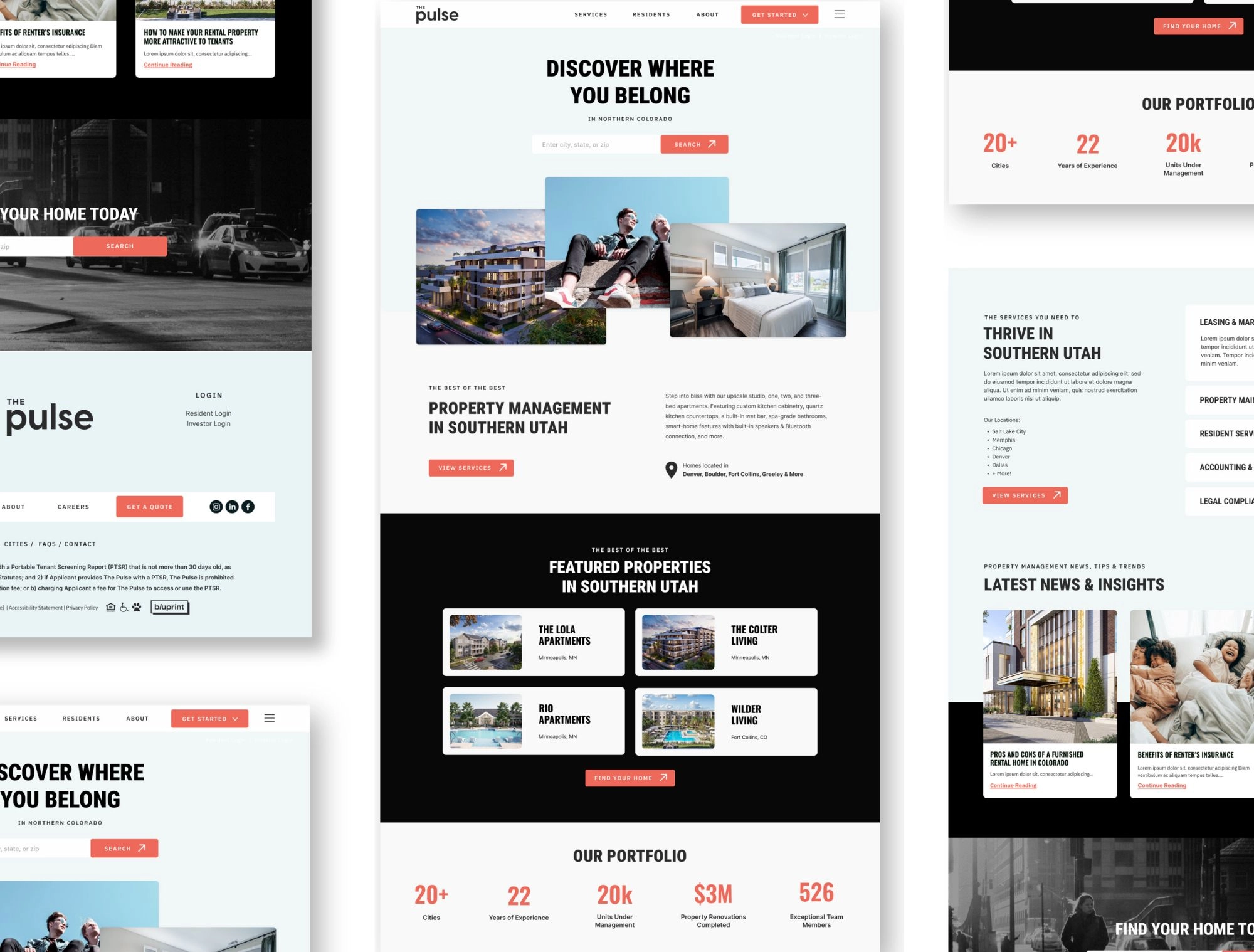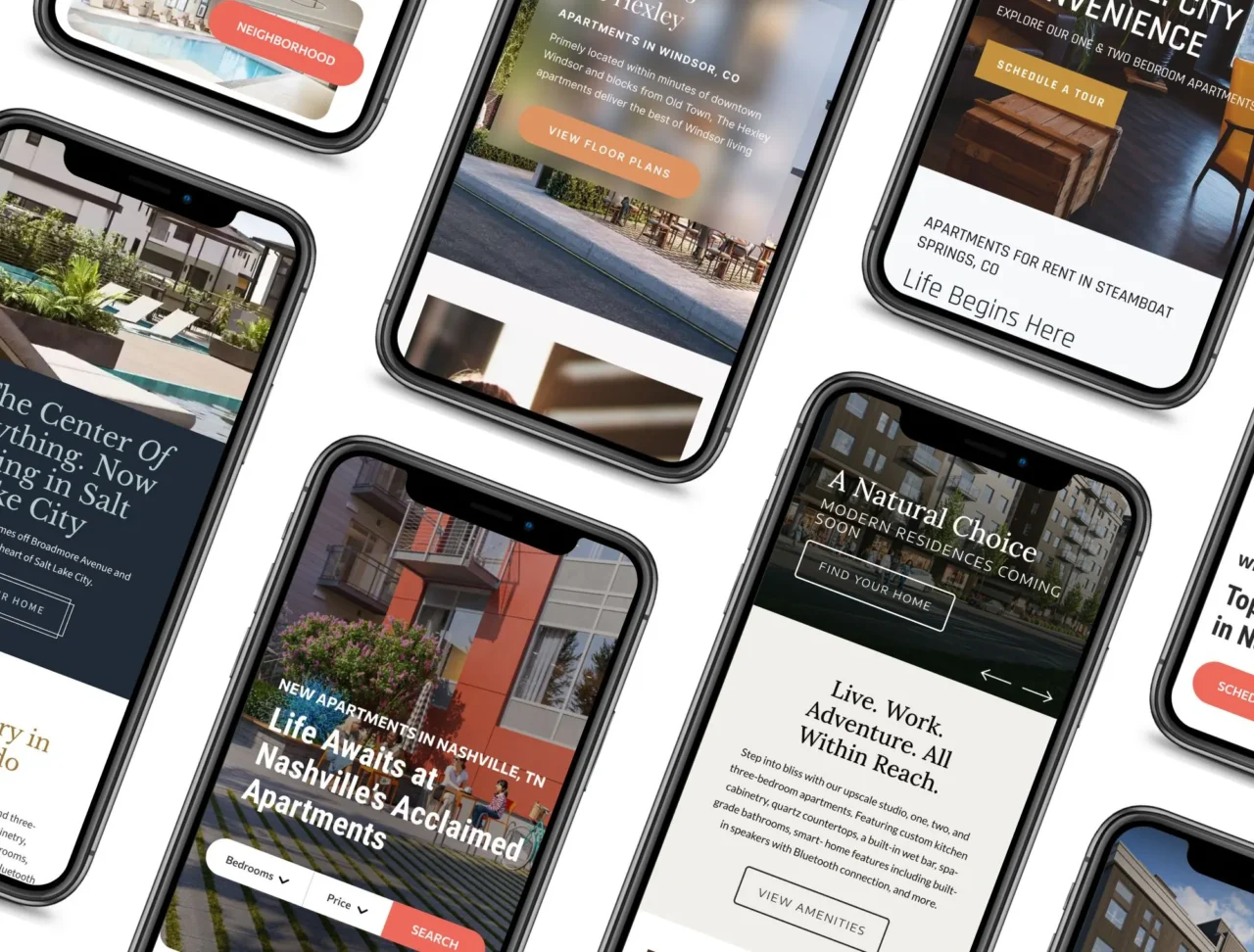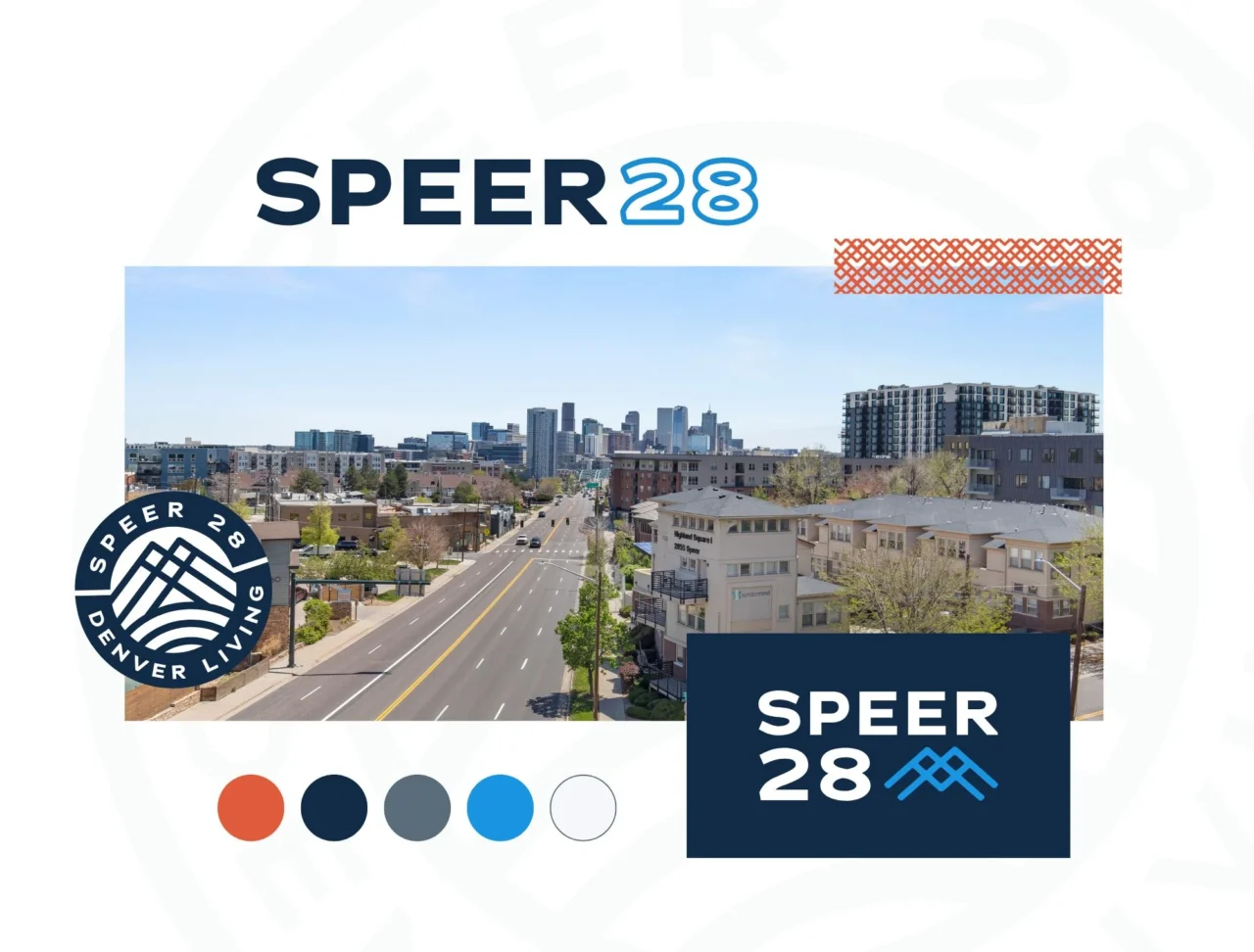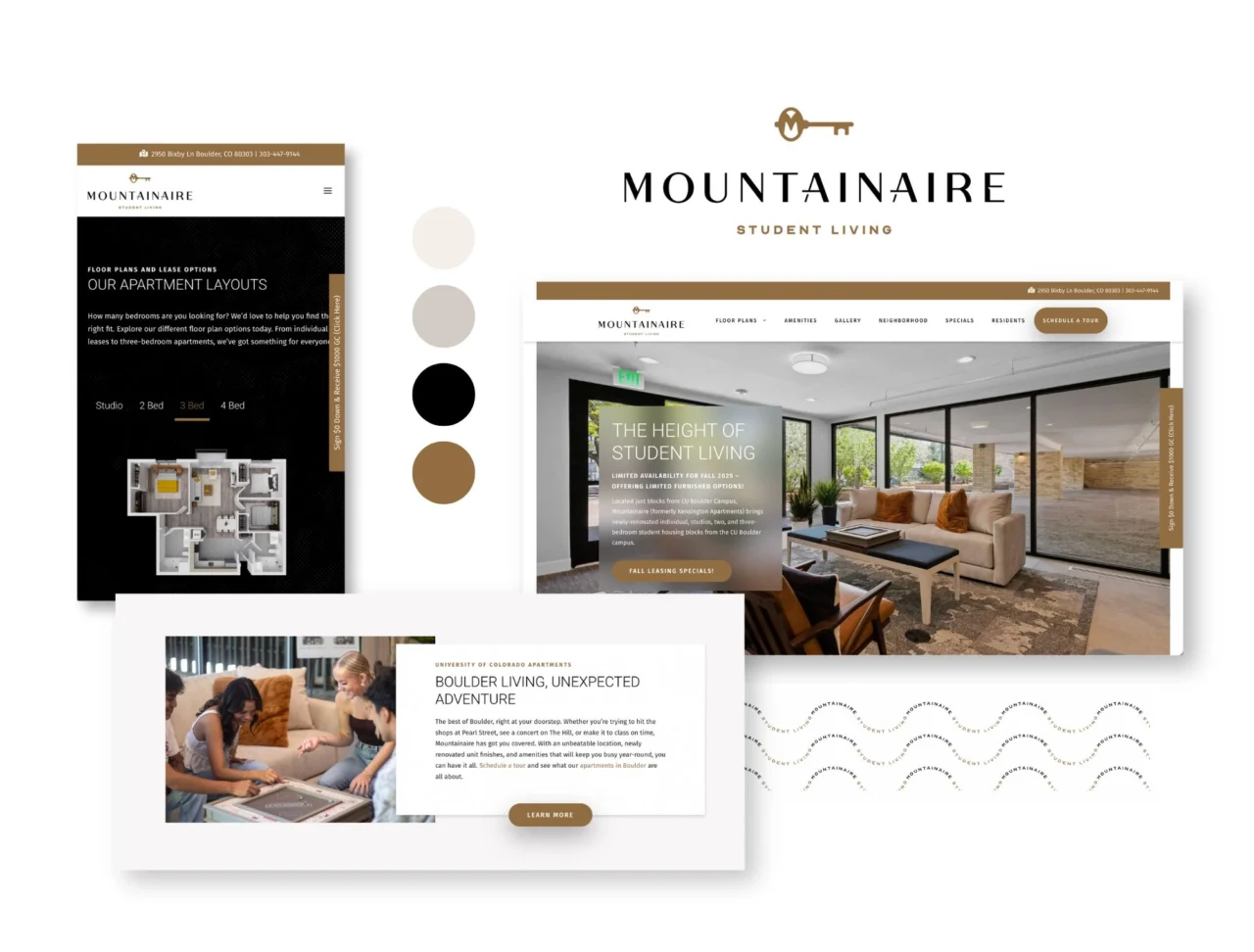When apartments sit empty, property managers lose money. Marketing tactics like signage, ILS listings, and ads can generate leads, but those efforts often hit a wall when prospective renters land on your website and it appears outdated, lacks the information they’re looking for, and doesn’t drive any action.
That’s why your website itself—not just the advertising—often determines whether you lease units quickly or struggle with extended vacancies.
Websites for property management are more than digital storefronts. When designed and implemented correctly, they function as operational tools that speed up every stage of leasing, from discovery to application to resident retention.
This guide explains why your website is central to occupancy, which features directly impact vacancy rates, and how to evaluate templates and platforms in a crowded vendor market.
Why a Professional Website Reduces Vacancies, Increasing Occupancy Rates
Your website isn’t about showing off. It’s about making sure potential residents find you, and don’t skip to the property down the street.
Prospects searching for apartments online expect the same standard of usability they encounter on major consumer platforms like Zillow, Redfin, and Apartments.com. If your site doesn’t measure up, renters simply bounce to the next option.
Three elements have the greatest impact on vacancy:
1. Mobile Performance
The majority of renters begin their search on a phone, and a slow site can divert them before they ever see your floor plans.
If your site loads in over three seconds or fails Google’s Core Web Vitals benchmarks, expect up to a 10% drop in conversions.
We consider slow, clunky mobile sites the number-one dealbreaker; renters won’t wait around to see what you offer.
2. Information Clarity
Renters aren’t just browsing, they’re vetting. According to Brindle’s apartment market survey, 74% of renters say easy navigation is critical, and 97% insist on seeing pricing up front.
If pricing, availability, or unit details require filling out forms or calling the office, you’re sacrificing trust, fast.
What successful sites do:
- Show pricing and availability on floor plan listings immediately, ideally through a real-time integration with your property management software. Tools like Rent Fetch make this seamless by pulling in accurate rates and unit availability so prospects always see up-to-date information.
- Use a logical navigation path, e.g., Property → Floor Plan → Unit → Apply.
3. Accessibility.
Meeting WCAG 2.2 AA standards is no longer optional. Under the Americans with Disabilities Act (ADA), websites are considered public accommodations, and courts frequently point to WCAG compliance as the benchmark for accessibility.
Features like visible focus states, large tap targets, and consistent help text aren’t just legal safeguards; they directly improve application completion rates.
Renters who struggle to interact with your site rarely finish the leasing process.
Improve Visibility With SEO-Ready Website Content
The first step in filling vacancies is making sure your property shows up where renters are searching.
Well-optimized property management websites improve visibility in local search results, reducing reliance on third-party listing sites.
A strong site achieves this by combining technical SEO with locally relevant content:
- Targeting local queries. Searchers use terms like “apartments in Fort Collins” or “1-bedroom near UNC Greeley.” Indexable landing pages built around these phrases increase the odds that your site appears before ILS listings.
- Structured URLs and metadata. A hierarchy like /denver/apartments/1-bedroom/ paired with optimized meta titles and descriptions signals relevance to search engines, and aligns with broader SEO strategies for property management that improve visibility across competitive markets.
- Unique property and unit content. Copy-and-paste listings hurt SEO. Each property page should have unique titles, high-resolution photos, and tailored amenity descriptions.
- Supportive content. Neighborhood guides, parking FAQs, and pet policy breakdowns both answer renter questions and capture long-tail keyword traffic.
- Google Business Profile alignment. Consistency matters. Your website’s contact details, hours, and links must match your GBP, and UTM tags should track which GBP visitors convert.
This combination of technical and content strategies is what turns a site into a lead engine, rather than just an online brochure.
For more on this, see our optimization tips for multifamily marketing.
5 Features That Directly Reduce Vacancy
Certain website features have a measurable impact on how quickly units are leased. These tools remove bottlenecks and shorten the time from inquiry to signed lease.
1. Automatic Availability and Pricing
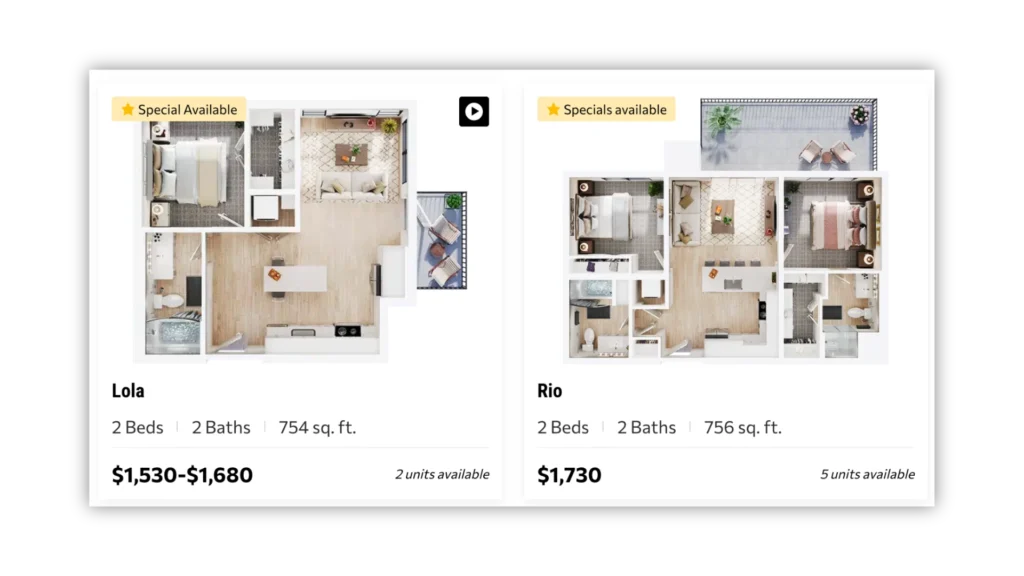
Integrating your property management system (PMS) with your website ensures prospects see accurate unit availability and rent rates.
Real-time data not only improves user experience but also cuts down on wasted inquiries that burden your leasing team.
Plugins like Rent Fetch make this process seamless by pulling live pricing and availability from your PMS and displaying it instantly on your site, so renters always have the most up-to-date information at their fingertips.
2. Self-Service Tour Scheduling
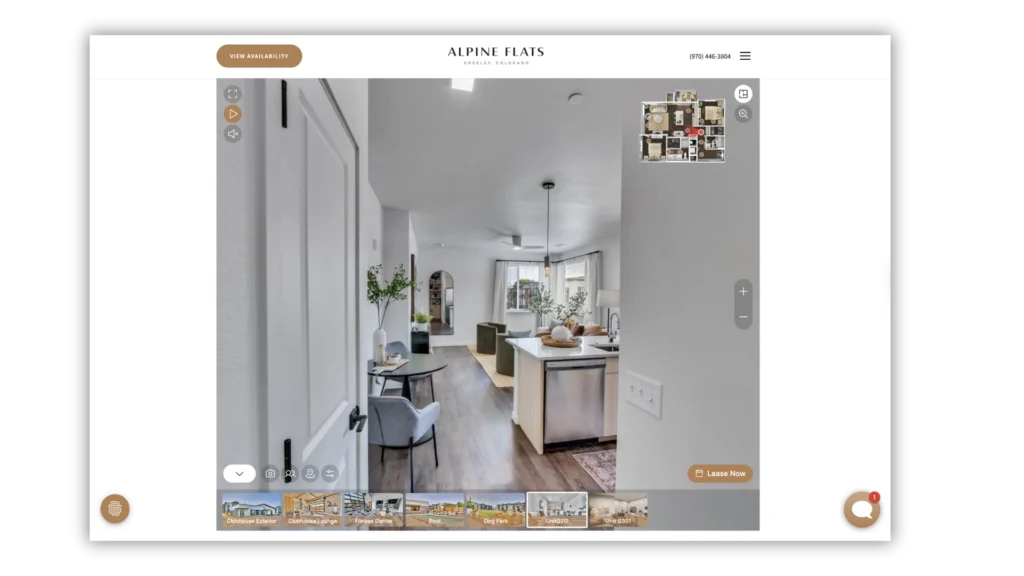
Renters want control. Whether it’s a guided visit, virtual tours through Matterport, or a live video walkthrough, giving prospects the ability to book tours directly on your site—without a phone call—removes a major barrier.
Layer in calendar integrations and automated SMS/email reminders, and you’ll cut no-shows significantly. In practice, we see properties cut time-to-tour from days to hours, which directly correlates with faster lease-ups.
3. Streamlined Online Applications
The application process is often where prospects disappear. A 30-minute form with unclear steps can be the difference between a signed lease and an abandoned cart. To fix this:
- Break applications into logical, saveable steps.
- Provide progress indicators so renters know how far they are.
- Use clear, transparent fee disclosures to build trust.
- Add lightweight pre-qual questions (income, move-in date, pets) to filter out unqualified applicants before they invest time.
The result: higher completion rates and fewer wasted hours for your leasing team processing incomplete or unqualified applications.
4. Authentic Photos & Videos that Represent Your Property
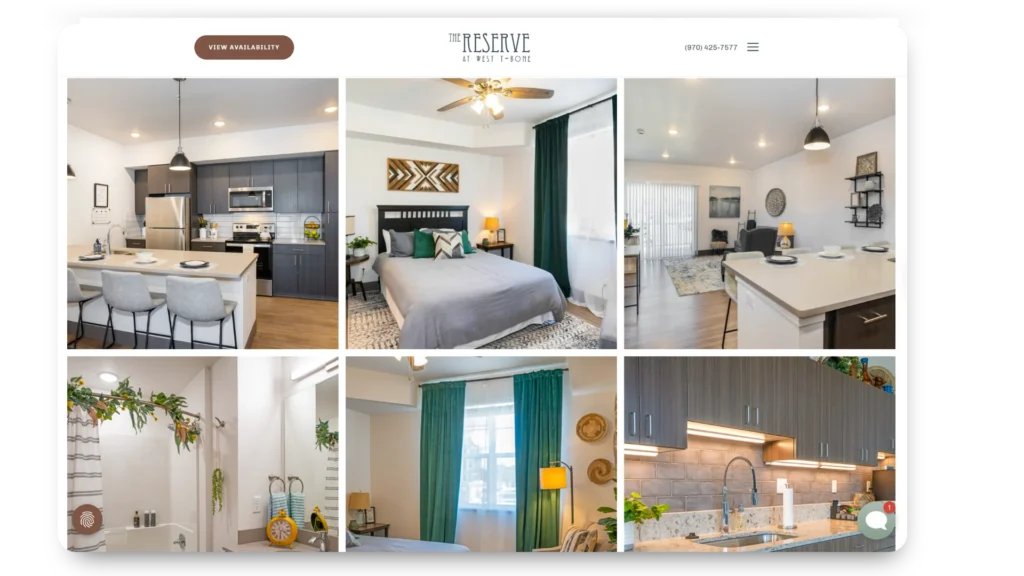
Visual assets sell units. Professional photography, detailed floorplan galleries, and short video walkthroughs give prospects confidence to move forward.
Just as important is site performance: images should be compressed into web formats (WebP, AVIF) with lazy loading to keep load times down.
5. Mobile-First Layouts
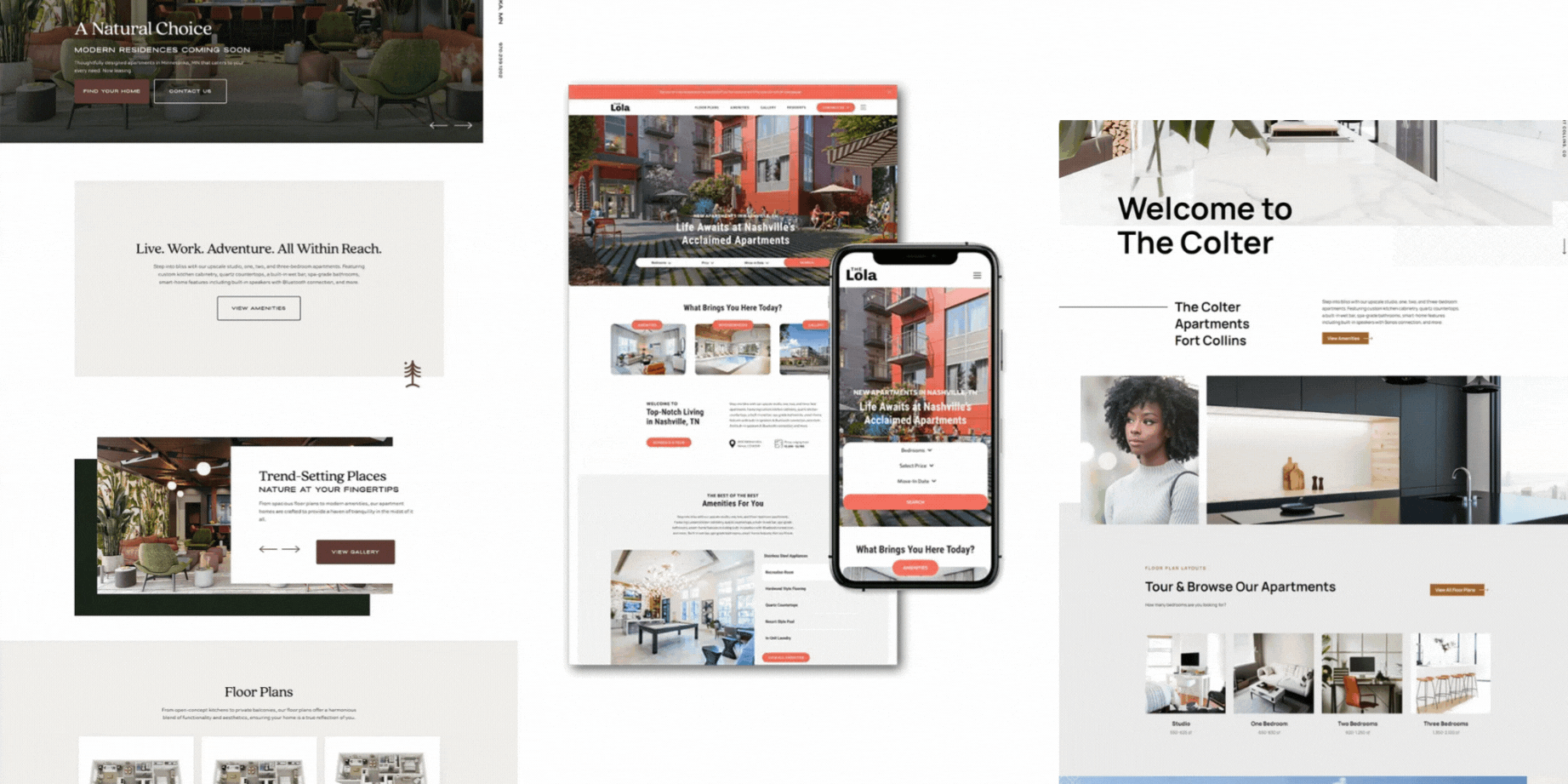
Most prospects aren’t apartment hunting on a laptop at their desk; they’re doing it in line at the coffee shop or between classes. If your site forces them to pinch, zoom, or dig for CTAs, you’ve already lost them.
A mobile-first leasing flow should:
- Put actions front and center. Make “Schedule a Tour” and “Apply Now” impossible to miss without being overwhelming. Think clear buttons, not buried links.
- Cut typing wherever possible. Replace long forms with dropdowns, toggles, and autofill so renters can complete steps quickly on the go.
- Keep critical info above the fold. Pricing, availability, and a next step should all appear without scrolling.
When done well, mobile design doesn’t just look good; it cuts hours or even days out of the leasing cycle because renters can act immediately instead of waiting to “check again later” on a computer.
Streamlining the Leasing Process
The best property management websites don’t just generate leads; they manage them efficiently. Every step of the leasing funnel should be mapped and optimized:
- Inquiry → Tour. Instead of an email back-and-forth, an auto-reply with a tour scheduling link gets prospects onto the calendar immediately.
- Tour → Application. After a confirmed tour, prompt applicants with a pre-filled link to begin the online application. This minimizes drop-off during the decision window.
- Application → Lease. Digital document upload and e-signature integrations shorten the time between approval and move-in.
This automation not only reduces administrative burden but also creates a smoother experience for renters. The faster a prospect moves through the funnel, the less chance they have to look elsewhere.
Beyond Leasing: Websites That Improve Retention
Vacancy reduction doesn’t stop at move-in. Resident satisfaction and renewals play a critical role in keeping units occupied. A property management website that supports current residents creates long-term occupancy stability.
Key resident-facing features include:
- Online rent payment and autopay. Over 60% of renters already pay online, and most prefer it. Offering autopay reduces late payments and improves cash flow.
- Maintenance request portals. Allow residents to submit detailed requests with photo uploads, reducing back-and-forth communication.
- Community resources. A resident hub with calendars, announcements, or event updates strengthens community ties.
Retained residents mean fewer make-ready costs, fewer marketing dollars spent, and fewer days vacant.
How to Choose the Right Property Management Website Template
Not all templates are created equal. A property management website template should meet both marketing and operational requirements. Use this checklist when evaluating options:
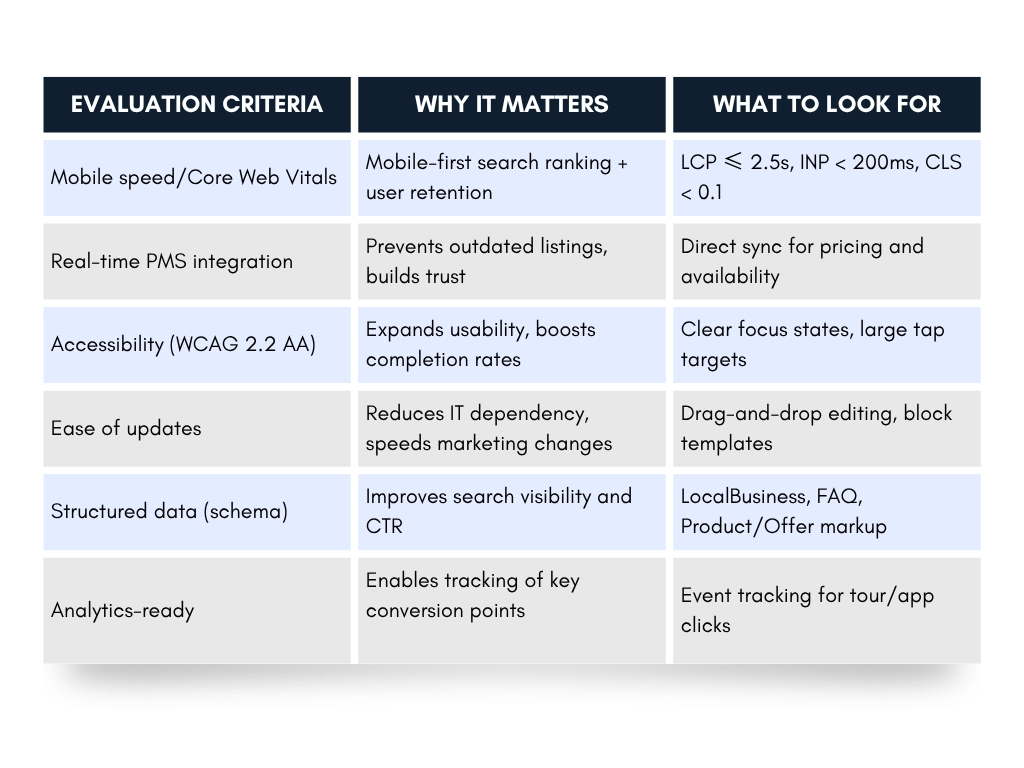
Choose templates that perform. The right website should load fast on mobile, pull real-time pricing and availability from your PMS, meet WCAG 2.2 AA standards, be easy for your team to update, include schema for SEO, and track every tour and application. These essentials directly cut vacancy time and boost conversions.
Explore our property management website themes built with these criteria.
Ready to Lease Faster? Here’s Your Next Step
Websites for property management are not passive marketing assets; they are active leasing systems. When designed with speed, clarity, and renter usability in mind, they reduce vacancy by:
- Ranking higher in local searches
- Providing accurate, real-time availability
- Enabling self-service tours and online applications
- Automating leasing workflows
Supporting residents post-move-in
Property managers who invest in high-performing websites see shorter vacancy cycles, stronger renewal rates, and less reliance on costly ILS platforms.If your current site can’t pass these benchmarks, it may be time to upgrade. Bluprint’s apartment and property management websites are built with these standards, ready to help you move units faster and manage them more efficiently.



